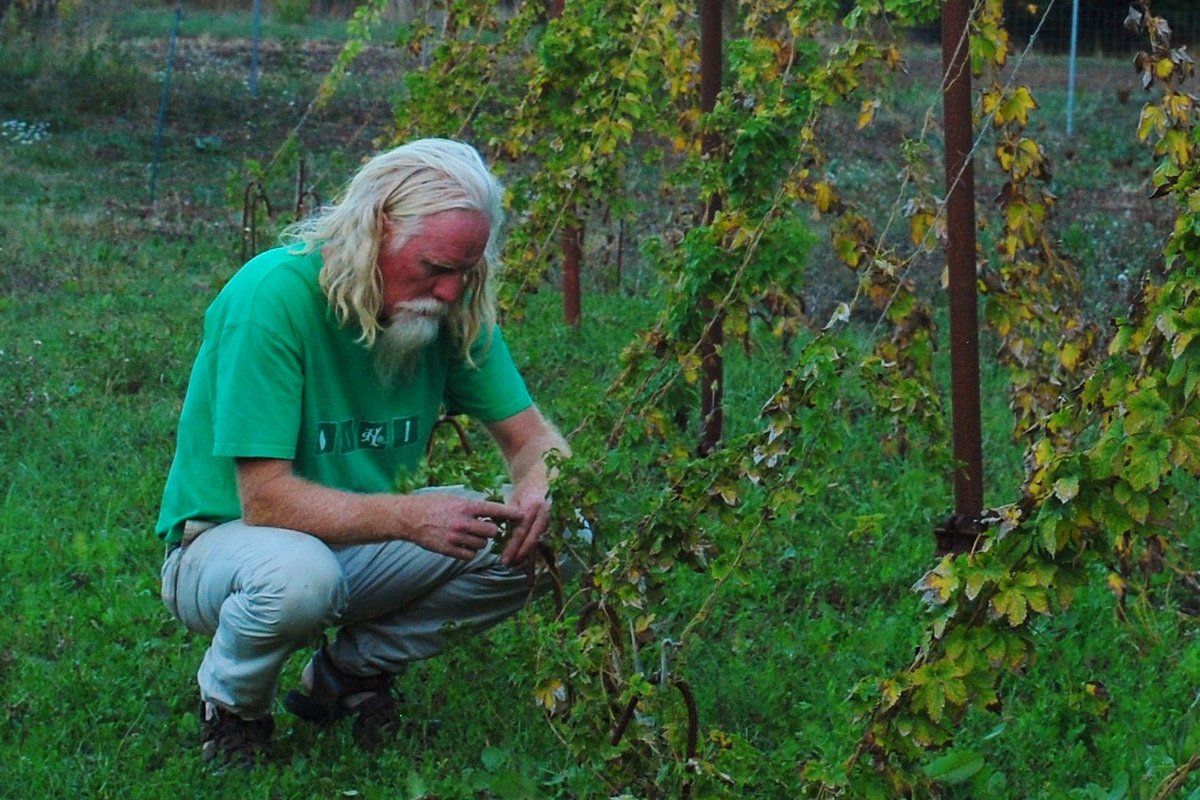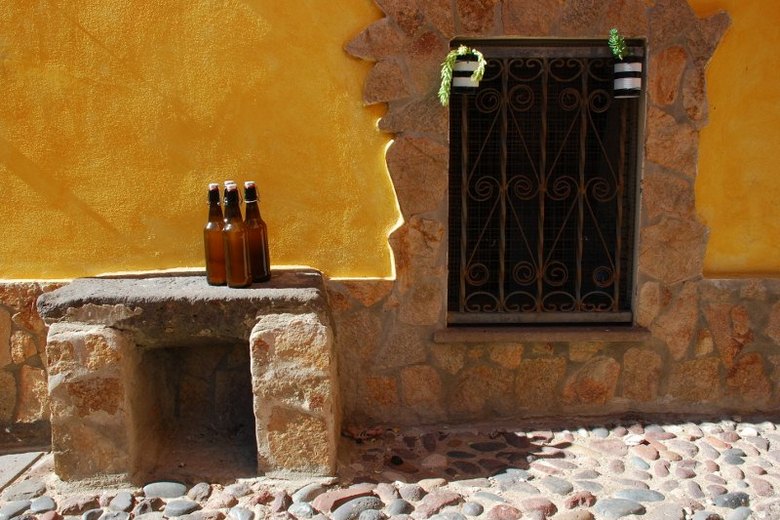Guest blog by Russ Taylor, XT Brewing Co

Carl Fitzpatrick, of BBBirra, checks his hops
Last summer at XT we brewed a Belgian wit beer, the Animal Donkey, with innovative and eccentric Italian Brewery BBBirra, from Bosa. The beer was made with wheat and loads of potent Sardinian orange zest, brought over by our brewing friend Carl Fitzpatrick.
This year, I headed out to the idyllic Sardinian coastal town of Bosa to join Carl again and get our brewing heads together for round two of our international collaboration.
Carl runs his brewery and farm in the medieval town of Bosa on the banks of the river Temo, in North West Sardinia. The two ventures are built on very strong environmental and sustainable principles close to Carl’s heart. The farm grows all the barley, wheat and hops for the beers, and his well provides all the brewing liquor; the yeast even comes from the local wine producers.
Both ancient and contemporary varieties of grains are grown to ensure a diverse culture on the farm and remove the need for chemical assistance. The by-products of brewing are fed to the farm animals. Unusually these days, even the used beer bottles are returned by Carl’s drinkers and refilled. The locals are so used to this now he doesn’t even need to charge a deposit. The whole process from field to glass takes place within walking distance of the farm.
The first beer we worked on in the four-storey brewery, tucked away in the narrow, winding streets of old town Bosa, was based on an Italian speciality, doppio malto. This very high gravity beer is made with a unique double mashing process. The super-strong wort is then munched away by yeast which have been cropped from actively fermenting Malvasia wine. To balance the massively chewy malt flavours, high-alpha hops are added for a citrus bite.

A selection of Sardinia beers
If the beers travel further than Bosa, Carl takes them in his mobile pub — an amazing converted German fire engine. With handpumps, a bar and a bespoke chilled cellar; the beers are enjoyed in perfect condition while drinkers rest on old wine barrels.
One day, between brews, we collected an old oak foeder from an ancient and crumbling wine cellar. Tucked away in a tiny narrow street, this was an Aladdin’s cave of amazing old wine casks, resting unused for many years. I wish I could have brought one home for a bit of whacky fermentation of my own.
As a balance to the doppio, we turned our attention to a beverage made from the oldest strain of grain grown by man — Einkorn wheat — which was originally cultivated in ancient Egypt. It’s a tough little grain and it takes a lot to get it to give up its sugars for brewing. To help the process, our grist needed to be blended with some contemporary malted wheat. The flavours of this hazy, refreshing Pharaoh’s Ale perfectly matched the heat of the Sardinian sun.
Sardinia has a hot Mediterranean climate and the beer culture has grown accordingly, with the locals and visitors preferring lighter and fruity beers, softer IPAs, wheat beers and lagers. The craft beer craze has swept across the whole of Italy and now even Sardinia has more than two dozen local breweries.
The beer market is still dominated by Ichnusa — a classic Euro fizz lager. As with many similar brands, this brewer is now a part of the giant Heineken, but a raft of small independent producers are making many inroads.
My pick of these new kids on the island include:
- Marduk, from Orosei on the east coast. This is one of the more commercial of the independent producers and their beers include American-style IPAs, Czech lagers and a Munich alt bier. But, as with BBBirra, they also follow a sustainability field-to-grain principle and have their own farm and maltings.
- Birrificio Cagliari, based in the capital, produces a very wide range of styles and all packaged in beautiful bottles with very stylish labels. Worth it just to enjoy the Italian designer look.
- Birra Lara, from Tertenia on the south eastern coast, is a very modern brewery creating beers using barley grown on its own farm. The owners enthusiastically support the traceability of their ingredients throughout the process.
- Sambrinus, from Sassari in the north, is the oldest craft brewer, operating since 1999. Beers follow a more classical style of traditional brews.
- Birrificio 4 Mori, based in the south western town of Guspini, is housed in old mine workings and uses an excellent numbering system for its beers.
Most of the beers are available in bottles. Generally, I found these to be bottle conditioned. The locals expect ‘craft’ to be cloudy and preferably with lots of foam. Finding the beers on draught was a little tricky, but when you do find them, they are often keg conditioned, in KeyKeg or other bag type disposable systems.
Many of the beers I tried were unfiltered and unpasteurised. In order to enjoy a really good range, look out for one of the many beer festivals around the island. These tend to be laid out in the market street style, where you can meet and talk to the brewery teams on their own stalls.
It was a pleasure to work with Carl again this year, and get an insight into beer and brewing in Italy. Travelling for beer — what could be better?




